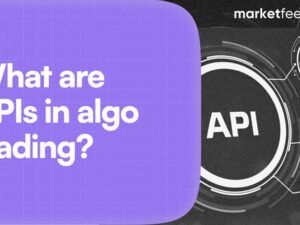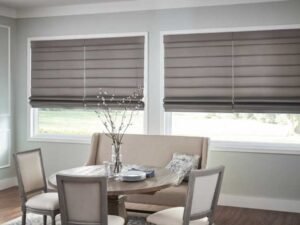In today’s rapidly evolving housing market, homeowners are presented with a variety of new mortgage solutions designed to meet their unique needs. Whether you’re a first-time buyer, a seasoned homeowner looking to refinance, or someone interested in alternative home financing options, understanding the range of innovative mortgage solutions available can help you make an informed decision.
As the market adapts to changes in technology, demographic shifts, and economic trends, new types of mortgage products are emerging to accommodate these transformations. This article will explore some of the most innovative mortgage solutions that modern homeowners can consider.
The Changing Landscape of Homeownership
Homeownership remains a cornerstone of financial stability and wealth building. However, the path to homeownership has changed significantly in recent years. With housing prices rising, student loan debts mounting, and job markets becoming more dynamic, the traditional 30-year fixed-rate mortgage may not be the best fit for everyone. Additionally, innovative mortgage products are now providing homeowners with greater flexibility, lower costs, and better financial management options.
In response to these changing dynamics, financial institutions are offering more tailored solutions to accommodate a wider range of homeowners. Some of the most innovative mortgage solutions allow for customizable payment plans, flexible qualification requirements, and access to more competitive rates.
Reverse Mortgages: A Solution for Older Homeowners
Reverse mortgages are becoming an increasingly popular option for homeowners aged 62 and older who have significant equity in their homes. Unlike traditional mortgages, where homeowners make monthly payments to a lender, a reverse mortgage allows the homeowner to convert their home equity into cash.
The lender makes payments to the homeowner, which can help supplement retirement income. This solution can be particularly attractive for seniors who wish to remain in their homes but need additional funds for living expenses or healthcare. If you’re considering a reverse mortgage, you might wonder, what are the requirements for a reverse mortgage? While each lender may have specific criteria, generally speaking, to qualify for a reverse mortgage, the homeowner must be at least 62 years old, live in the home as their primary residence, and have sufficient equity.
The homeowner must also meet with a counselor approved by the Department of Housing and Urban Development (HUD) to ensure they understand the terms and consequences of the loan.
One key benefit of reverse mortgages is that they do not require monthly repayments, which can be a major relief for seniors on a fixed income. However, the loan is repaid when the homeowner moves out, sells the home, or passes away, which means the equity in the home is used to repay the loan.
Adjustable-Rate Mortgages (ARMs): Flexibility in a Shifting Market
Adjustable-rate mortgages (ARMs) are one of the most popular alternatives to traditional fixed-rate loans. With an ARM, the interest rate fluctuates over time, typically after an initial fixed period. This option can be appealing for homeowners who anticipate lower rates in the future or who expect their income to increase over time. While the initial rate is often lower than a fixed-rate mortgage, the downside is that your payments could rise if interest rates increase.
The advantage of an ARM is its flexibility. Homeowners who plan to sell their property or refinance before the adjustable period kicks in can benefit from lower initial rates. However, ARMs require careful consideration, as there is a risk that your monthly payments could become unaffordable if rates spike.
Interest-Only Mortgages: Lower Payments, Higher Flexibility
Interest-only mortgages allow homeowners to pay only the interest on their loan for a set period, usually 5 to 10 years. After the interest-only period ends, the homeowner begins paying both the principal and interest, which can lead to higher payments. This option is ideal for homeowners who need to free up cash flow in the short term. It can also be helpful for individuals with fluctuating incomes, such as self-employed people, or those who expect a financial windfall later.
Interest-only mortgages come with both benefits and risks. On the one hand, the homeowner can manage short-term expenses more easily. However, there is a risk that the homeowner may not be able to pay down the principal when the interest-only period ends, potentially leading to financial strain.
Hybrid Mortgages: Combining Flexibility and Stability
Hybrid mortgages are a combination of fixed-rate and adjustable-rate mortgages. They offer homeowners the best of both worlds: stability for the first few years, followed by the potential for lower payments if interest rates drop. These mortgages are typically structured so that the interest rate is fixed for the first 5, 7, or 10 years, and then it switches to an adjustable-rate mortgage for the remainder of the loan term.
Hybrid mortgages can be a great option for homeowners who want the security of a fixed rate initially but are open to the possibility of taking advantage of lower rates in the future. They are often used by homeowners who plan to sell or refinance before the adjustable period kicks in. However, like with other adjustable-rate mortgages, there is a risk that rates could increase, making monthly payments more expensive.
Government-Backed Loans: A Safer Option for Some
Government-backed loans, such as FHA, VA, and USDA loans, provide alternatives to traditional financing. These loans are particularly beneficial for first-time buyers, veterans, or those with lower credit scores. The government guarantees these loans, which makes lenders more willing to offer more favorable terms, such as lower interest rates or smaller down payments.
FHA loans, for example, allow buyers to put as little as 3.5% down. VA loans, available to veterans and active military members, offer the benefit of no down payment and no private mortgage insurance (PMI). USDA loans, offered to rural homebuyers, also require no down payment.
These government-backed options can help individuals who may otherwise struggle to qualify for conventional financing due to credit history or lack of funds. They provide lower entry barriers for homeownership and are often seen as a secure and cost-effective way to buy a home.
Online Mortgage Lenders and Tech-Driven Solutions
The rise of technology has also brought innovations in the mortgage industry. Online mortgage lenders and digital platforms are changing the way homeowners apply for loans and manage their mortgages. These lenders offer a more streamlined process, often with faster approval times and lower fees. Some platforms use artificial intelligence (AI) and big data to assess creditworthiness, helping borrowers who might have been overlooked by traditional banks.
Online mortgage solutions offer added convenience, with many platforms allowing homeowners to complete the entire application process online, from application to closing. Additionally, tech-driven tools such as mortgage calculators and automated recommendations can help homeowners choose the best mortgage products for their specific needs.
The Pros and Cons of Innovative Mortgage Solutions
Innovative mortgage solutions provide several benefits, including flexibility, lower payments, and a range of options tailored to specific needs. However, they also come with potential risks. For example, adjustable-rate and interest-only mortgages can lead to higher payments in the future if interest rates rise or if the homeowner is unable to pay down the principal.
Given the variety and complexity of these loan types, navigating the mortgage market can feel overwhelming. This is where a Mortgage Broker plays a crucial role. Acting as knowledgeable guides, they compare lenders, interpret financial terms, and help borrowers identify the most suitable options based on their unique circumstances. Their expertise is particularly valuable when dealing with nontraditional loans, as they can help clients avoid costly missteps and make more informed, confident decisions.
Conclusion
As the homeownership landscape continues to evolve, so too does the variety of mortgage solutions available to modern homeowners. From adjustable-rate and interest-only mortgages to government-backed loans and reverse mortgages, there are more options than ever before. By understanding the innovative mortgage products available, homeowners can make smarter decisions and choose the solution that best fits their financial situation. However, as with any major financial decision, it’s essential to carefully evaluate the pros and cons and seek professional guidance when needed to ensure a successful and sustainable homeownership journey.










